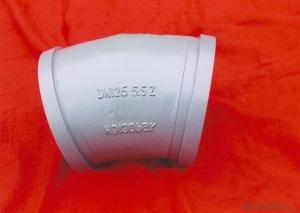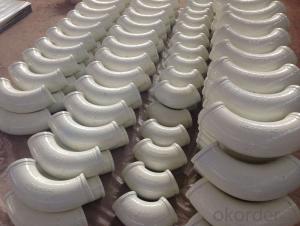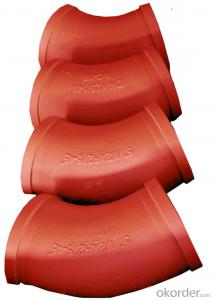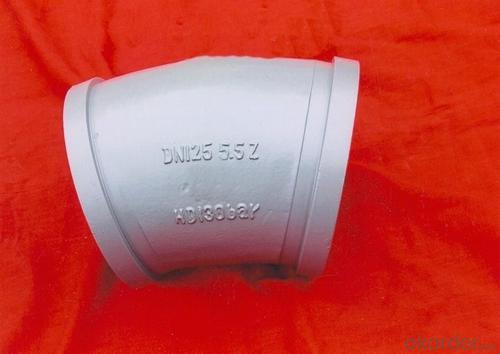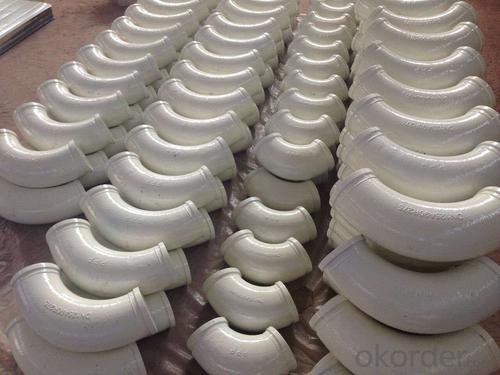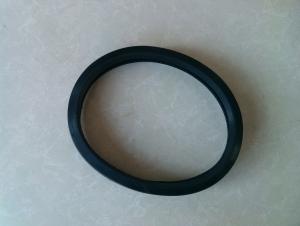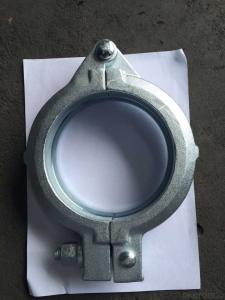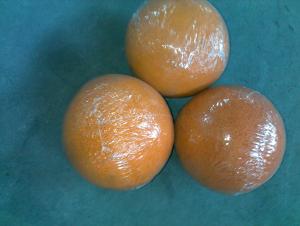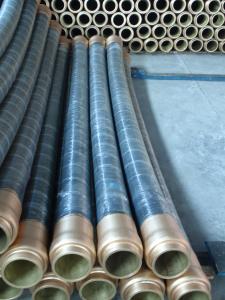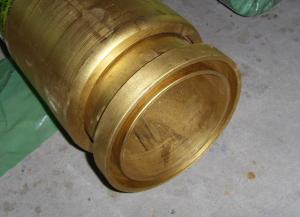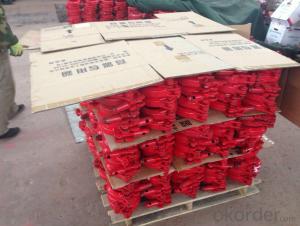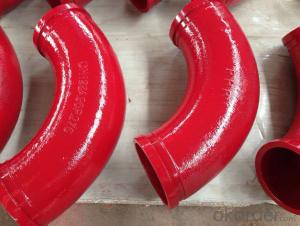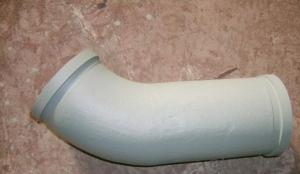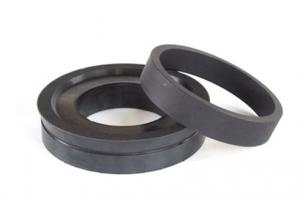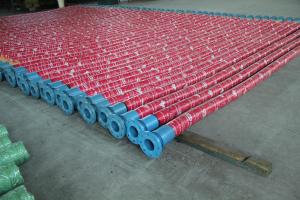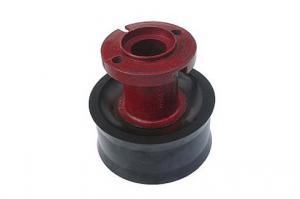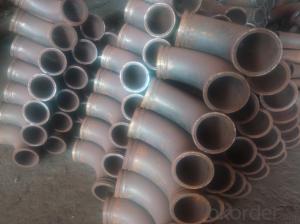CONCRETE DELIVERY ELBOW PM TYPE 30DEG R275 DN125
- Loading Port:
- Tianjin
- Payment Terms:
- TT OR LC
- Min Order Qty:
- 100 pc
- Supply Capability:
- 10000 pc/month
OKorder Service Pledge
OKorder Financial Service
You Might Also Like
concrete pump elbow table
Wear-resistant Single or Double Concrete Pump Elbow | |||||||
Type | Singe Elbow | Double Elbow | |||||
Model | DN125 | DN150 | DN175 | DN125 | |||
Material | Casting Steel ,ST52 | Inside | 40Cr | Outside | |||
Size | R275*90° | R275*90°+110 | 36° | F2000 | R275*90° | R275*90°+110 | |
R275*45° | R275*90°+211 | R400*30° | A3000 | R275*45° | R275*90°+211 | ||
R275*25° | R275*90°+411 | R400*45° | 471B | R275*25° | R275*90°+411 | ||
R275*20° | R275*90°+424 | R400*30° | 571B | R275*20° | R275*90°+424 | ||
R275*15° | R275*45°+170 | R488*90° | A1000 | R275*15° | R275*45°+170 | ||
R180*90° | R275*45°+310 | R500*90 | C1000 | R180*90° | R275*45°+310 | ||
R232*60° | R275*45°+310 | R280*90° | B2000 | R232*60° | R275*45°+310 | ||
R240*36° | 20°Lengthen | R240*36° | 20°Lengthen | ||||
R240*30° | 25°+740 | R240*30° | 25°+740 | ||||
R240*15° | 40°Zoomlion | R240*15° | 40°Zoomlion | ||||
R385*29° | R385*29° | ||||||
R315*33° | R315*33° | ||||||
Technic | Forged | ||||||
Average life | 25,000cubic | 50,000cubic | |||||
Appliciation | Used in concrete transport in construction work | ||||||
1.product profile:The double layer concrete pump elbow is developed by ourselves through new
technology and process.
2.characteristic:the inner layer of this concrete pump elbow undergoes heat treatment,and then the rigitiry can reach 62-65HRC.
3.characteristic:the outer layer of the concrete pump elbow possess good toughness properties
to protect the inner layer,so the security of the elbow is improved.
4.life:the experiment done abroad shows that the life of our concrete pump elbow can reach 35000-50000cbm,got the customers' praise
5.Beside the double layer concrete pump elbow,we produce all kinds of concrete pump parts,
straight pipe hose flange coupling and so on.
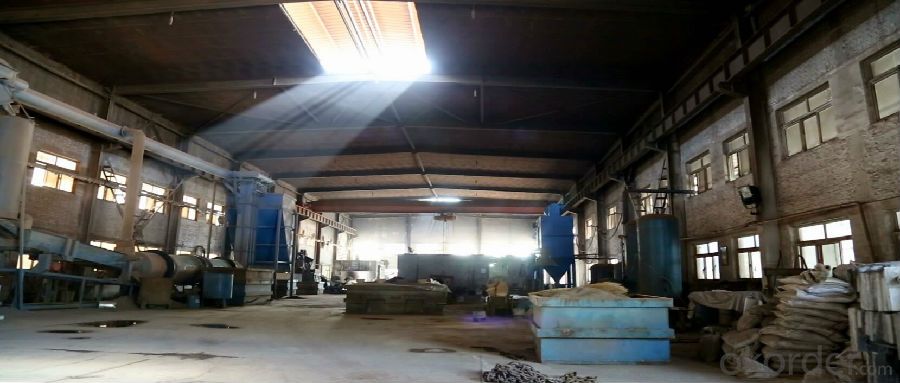
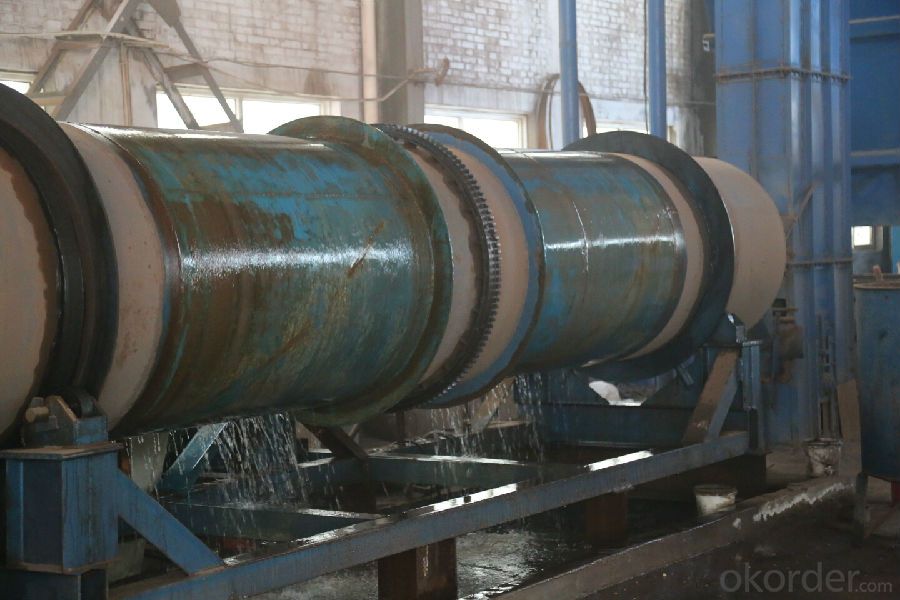
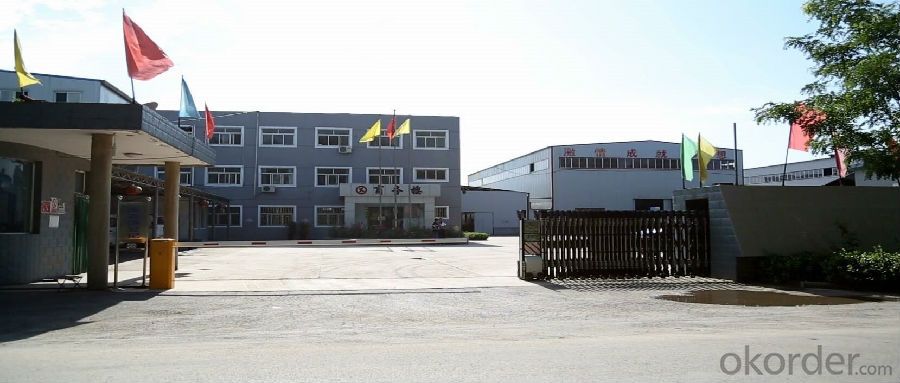
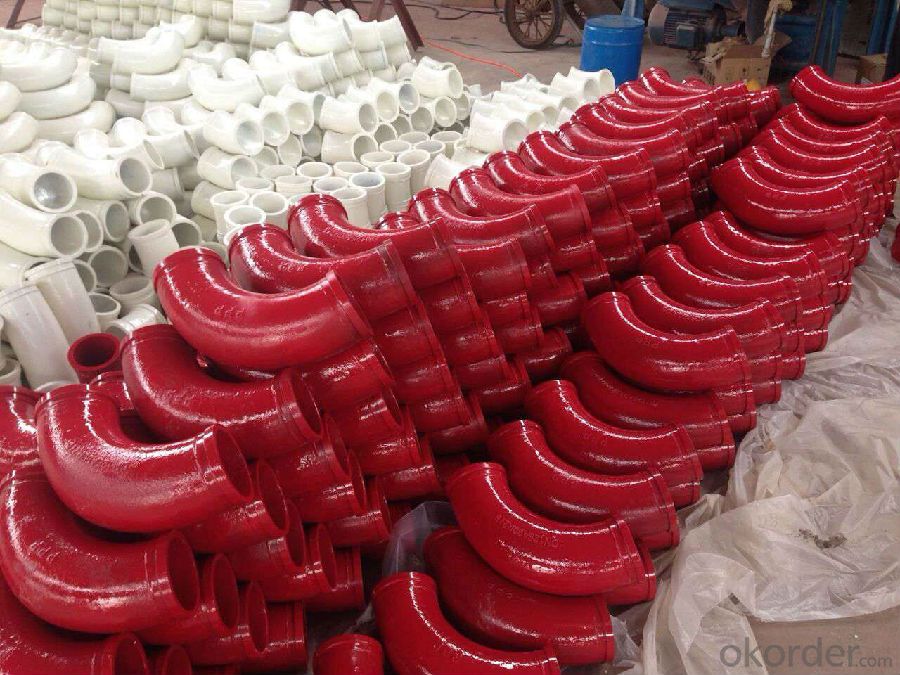
- Q: Where can I buy concrete pump spare parts?
- Concrete pump spare parts can be purchased from various sources. One possibility is to contact the manufacturer of your concrete pump. Typically, they have authorized dealers or distributors who sell genuine spare parts for their equipment. This guarantees that the parts are of high quality and compatible with your specific pump model. Another option is to explore specialized construction equipment suppliers or dealers in your locality. These companies often carry a wide range of spare parts for different types and brands of concrete pumps. You may either visit their physical stores or browse their websites to check if they have the specific parts you require. Alternatively, online marketplaces and platforms offer a convenient way to buy concrete pump spare parts. Websites such as Amazon, eBay, and Alibaba have an extensive selection of spare parts from sellers worldwide. You have the opportunity to compare prices, read reviews, and select the parts that best meet your needs. Before finalizing your purchase, it is crucial to ensure that you are buying from a reputable source. Look for sellers with positive feedback or ratings, and verify if they provide warranties or return policies. Additionally, take into account factors like shipping costs, delivery times, and customer service when determining where to purchase your concrete pump spare parts.
- Q: Are there any specific guidelines for the installation of pistons or cylinders in concrete pump spare parts?
- Yes, there are specific guidelines for the installation of pistons or cylinders in concrete pump spare parts. It is important to follow manufacturer instructions and recommendations for proper alignment, lubrication, and torque specifications during installation. Additionally, regular inspection and maintenance are crucial to ensure optimal performance and longevity of the pump parts.
- Q: What is the function of a concrete pump hydraulic filter?
- The concrete pump hydraulic filter serves to eliminate impurities and contaminants from the hydraulic fluid, which is responsible for the pump's operation. Its purpose is to capture particles like dirt, debris, and metal fragments that might be in the hydraulic system. By removing these contaminants, the filter guarantees that the hydraulic fluid remains clean and devoid of any harmful particles that could cause damage. This, in turn, keeps the concrete pump functioning smoothly and for a longer period of time, as it prevents blockages, wear and tear, and potential harm to the hydraulic components. Furthermore, a clean hydraulic system minimizes the risk of hydraulic fluid leakage, which can result in expensive repairs and downtime. Hence, the concrete pump hydraulic filter is crucial in ensuring the effectiveness, dependability, and resilience of the hydraulic system.
- Q: How often should a concrete pump cleaning ball be used?
- A concrete pump cleaning ball should be used after every pumping job or at least once a day to ensure the cleanliness and proper functioning of the pump. The cleaning ball helps remove any build-up or debris that may have accumulated inside the pump and its pipes during the pumping process. Regular use of a cleaning ball helps prevent clogs and blockages, ensuring a smooth and efficient pumping operation.
- Q: Are there any specific guidelines for the disposal of packaging materials of concrete pump spare parts?
- Packaging materials of concrete pump spare parts have specific guidelines for disposal. It is advised to adhere to local waste management regulations and authorities' guidelines. To begin with, it is essential to separate the various packaging materials, such as cardboard boxes, plastic wraps, foam inserts, and other materials used for packaging the spare parts. This will facilitate efficient recycling or appropriate disposal of each material. Cardboard boxes can usually be recycled by flattening them and placing them in designated recycling bins. Plastic wraps should also be separated and discarded in specific plastic recycling bins. Foam inserts, commonly used for spare parts protection, may not be recyclable in all areas, so specific recycling instructions should be checked. If recycling is not possible, foam inserts can be disposed of in regular waste bins. Before disposal, it is important to ensure that all packaging materials are free from any residual concrete or other hazardous substances. Any contamination should be cleaned or removed properly to prevent environmental pollution. If the packaging materials cannot be recycled or disposed of through regular waste management methods, it is recommended to contact local recycling centers or waste management facilities to inquire about specific disposal options. They may offer guidance or accept these materials for specialized processing or disposal. Overall, responsible waste management practices should be prioritized, and compliance with local authorities' specific guidelines is crucial to ensure proper disposal of packaging materials for concrete pump spare parts.
- Q: How often should concrete pump booms be inspected and maintained?
- Concrete pump booms should be inspected and maintained regularly to ensure safe and efficient operation. The frequency of inspections and maintenance will depend on the usage and working conditions of the concrete pump boom. Generally, it is recommended to inspect and maintain the boom at least once every month or after every 250 pumping hours, whichever comes first. During these inspections, it is important to check for any signs of wear and tear, damage, or malfunctioning parts. The boom's hydraulic system, including the hoses, cylinders, and valves, should be thoroughly inspected and tested for any leaks, blockages, or malfunctions. The boom's structural integrity, including the main boom, articulation points, and outriggers, should also be inspected for any cracks, deformations, or signs of stress. Regular maintenance of the concrete pump boom should include cleaning and lubricating all movable parts, checking and adjusting the tension of the cables, belts, and chains, as well as inspecting and replacing any worn-out or damaged components. The boom's electrical and control systems should also be inspected and tested to ensure proper functioning. In addition to regular inspections and maintenance, it is crucial to follow the manufacturer's guidelines and recommendations for specific maintenance intervals and procedures. It may be necessary to perform more frequent inspections and maintenance if the concrete pump boom is subjected to heavy usage, harsh working conditions, or if there are any significant changes in the performance or operation of the boom. By conducting regular inspections and maintenance, concrete pump boom owners can minimize the risk of accidents, prolong the lifespan of the equipment, and ensure that it operates at its optimal performance level. It is always advisable to consult with the manufacturer or a qualified professional to determine the most appropriate inspection and maintenance schedule for a specific concrete pump boom.
- Q: Can I get spare parts for concrete pumps with different types of valve systems, such as S-valve or gate valve?
- Yes, it is possible to obtain spare parts for concrete pumps with different types of valve systems, including S-valve or gate valve. These spare parts are typically available through manufacturers, distributors, or specialized suppliers in the construction industry. It is important to identify the specific make and model of your concrete pump to ensure compatibility when purchasing spare parts.
- Q: How often should hopper grate levers be inspected or replaced in a concrete pump?
- To ensure the proper functioning and prevent potential issues, it is necessary to regularly inspect the hopper grate levers in a concrete pump. The frequency of inspections may vary based on factors such as usage intensity, material being pumped, and operating conditions. However, a general recommendation is to conduct inspections at least once every six months or after every 500 hours of operation. During the inspection, carefully examine the hopper grate levers for signs of wear, damage, or misalignment. If any issues are identified, it is crucial to promptly replace the levers to prevent further damage to the hopper grate system or potential safety hazards. To ensure optimal performance and durability, it is essential to utilize high-quality replacement parts specifically designed for the concrete pump model. By conducting regular inspections and timely replacements of hopper grate levers, the efficiency and reliability of the concrete pump can be maintained, minimizing downtime and expensive repairs.
- Q: Are there any specific guidelines for the storage and handling of concrete pump spare parts during transportation?
- Yes, there are specific guidelines for the storage and handling of concrete pump spare parts during transportation. These guidelines include ensuring proper packaging and labeling of the spare parts, using appropriate containers or packaging materials to protect them from damage, securely fastening and securing the spare parts to prevent movement during transit, and following any specific instructions provided by the manufacturer for handling and storing the spare parts. It is also important to consider factors such as temperature, humidity, and potential hazards during transportation to ensure the integrity and quality of the spare parts.
- Q: How do I properly adjust and control flow rates in concrete pump spare parts?
- In order to achieve proper adjustment and control of flow rates in concrete pump spare parts, it is important to follow a series of key steps: 1. Get acquainted with the equipment: Take the time to familiarize yourself with the specific concrete pump spare parts you will be working with. Read the user manual and review any documentation provided by the manufacturer. This will give you a comprehensive understanding of the equipment's capabilities and effective methods for adjusting flow rates. 2. Verify the pump settings: Prior to commencing any concrete pumping operation, ensure that the pump settings are correctly configured. This involves checking the hydraulic pressure, engine RPM, and any other relevant settings. Confirm that all valves and controls are in the appropriate position for the desired flow rate. 3. Monitor the pump speed: The speed of the pump directly influences the flow rate of the concrete. Different concrete mixtures may require varying pump speeds in order to achieve the desired flow rate. Adjust the engine RPM accordingly, referring to the manufacturer's recommendations and any specific project requirements. 4. Modify the pump stroke: Many concrete pumps offer adjustable pump strokes to regulate the flow rate. By altering the length of the stroke, you can increase or decrease the volume of concrete being pumped. Experiment with different stroke lengths to determine the optimum flow rate for your particular application. 5. Utilize the control panel: Numerous concrete pumps are equipped with a control panel that allows for precise adjustment of flow rates. Make use of these features to fine-tune the flow rate. Use the control panel to monitor the pump's performance and make any necessary adjustments to maintain a consistent flow. 6. Regularly inspect and maintain the equipment: Proper maintenance is essential to ensure accurate adjustment and control of flow rates. Routinely inspect the concrete pump spare parts for any signs of wear or damage. Clean and lubricate the components as recommended by the manufacturer. A well-maintained pump will operate more efficiently and provide more precise control over flow rates. By adhering to these steps, one can effectively adjust and control flow rates in concrete pump spare parts. Always prioritize safety and consult the manufacturer's instructions and guidelines for specific recommendations and considerations.
Send your message to us
CONCRETE DELIVERY ELBOW PM TYPE 30DEG R275 DN125
- Loading Port:
- Tianjin
- Payment Terms:
- TT OR LC
- Min Order Qty:
- 100 pc
- Supply Capability:
- 10000 pc/month
OKorder Service Pledge
OKorder Financial Service
Similar products
Hot products
Hot Searches
Related keywords

